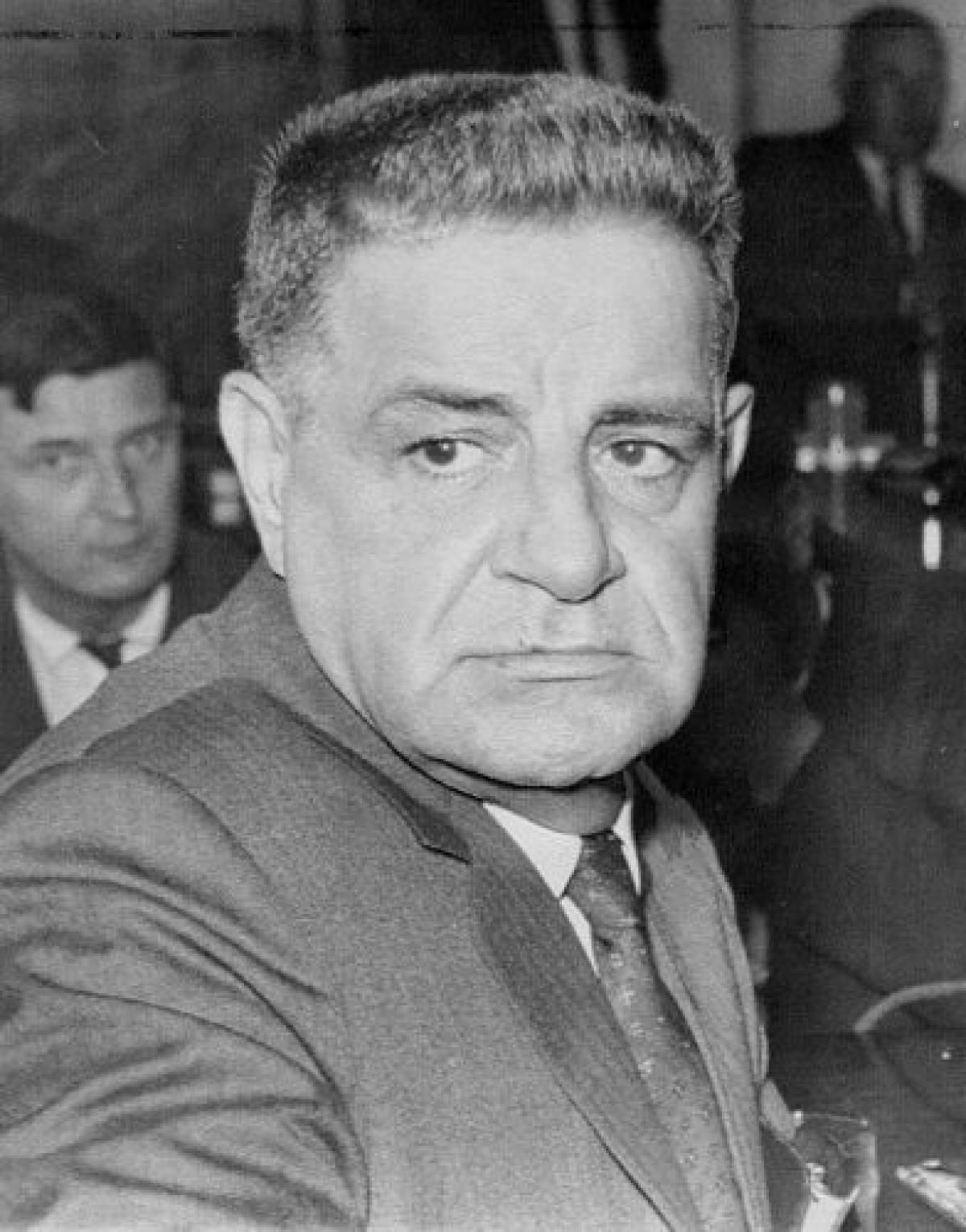Joseph M. “Joe Cargo” Valachi ranks as one of the most notorious Mafia informants, the first mobster to acknowledge, in public, on television, under oath, that Cosa Nostra is real. Long before Sammy “The Bull” ratted out John Gotti, Valachi’s turncoat testimony gave a face to a Mafia the public knew nothing about.
Joseph Valachi, who also used the aliases Charles Charbano and Anthony Sorge, was born September 22, 1903, in the East Harlem neighborhood of Manhattan. His parents were Italian immigrants and his father was a mean drunk.
Valachi got started as a criminal by joining a gang known as the “Minutemen” because its members could execute burglaries within a minute. He drove the getaway car, and he was prized for his fast escapes.
Valachi earned a few early beefs. He was charged with grand larceny in 1921 and in 1923 he served nine months in jail for attempted burglary after a robbery went bad. When he got out, the gang had moved on, so he started a new one.
During the final years of Prohibition, Valachi found work with the Reina crime family, one of the five families of New York City (it’s now the Lucchese family). He became a soldier and was there during the Castellammarese War, one of the bloodiest periods in U.S. Mafia history.
The war started when Salvatore Maranzano, head of one New York family, resisted attempts by another boss, Joe Masseria, to consolidate all families under his control.

Valachi picked the winning side, fighting for Maranzano. Masseria was murdered at a Coney Island restaurant in 1931, likely at the decision of Charles “Lucky” Luciano and his associates.
Maranzano appointed Valachi one of his bodyguards, but the job didn’t last. Maranzano was also killed, again on the word of Luciano, who immediately took his place as head of the new Luciano crime family.
Valachi stuck around. Unlike other famous names in organized crime history, he was never much of a climber. He remained a soldier in the Luciano family (now known as the Genovese family) for almost 30 years after his boss’ rise.
In 1959, that streak ended and Valachi was sented to 15 to 20 years in prison on a narcotics conviction. He was sent to the same prison where fellow mobster Vito Genovese was incarcerated. In 1962, while they were serving there together, Genovese supposedly gave Valachi the “kiss of death” because he suspected Valachi of informing.
Most notorious Mafia figures make headlines and live in memory because of what they do while they’re in the mob. Valachi won his fame for what he did outside Cosa Nostra.
No one knows for sure why he decided to turn on his Mafioso friends. Valachi claimed he did it because he wanted to help the public and because the mob had ruined his life. But he may have had ulterior motives based on his own criminal history.
According to Valachi, he panicked when Genovese kissed him and murdered a fellow inmate he mistakenly believed had been sent to kill him. Now, facing the death penalty, Valachi may have agreed to testify in order to secure a life sentence and protection instead.
In any event, he squealed to everyone: the U.S. Bureau of Narcotics and Dangerous Drugs, the Justice Department, the FBI and, in testimony broadcast on radio and television, to the U.S. Senate Permanent Subcommittee on Investigations.
The information was moderately useful in investigations and prosecutions of Mafia figures, and it helped solve several murders. More significantly, it painted a detailed picture of the mob in America and revealed far more than anyone else had ever dared to share about organized crime, including its Italian name, Cosa Nostra (translated: “Our Thing”).
Valachi described the history of the mob, its membership, its inner workings and its language. He also described its organization, from soldiers on the bottom to caporegimes (lieutenants) in the middle to bosses at the top, with the so-called Commission moderating disputes between the nation’s major crime families.
Above all, he served as vivid evidence to a skeptical public that the Mafia is a very real thing. Robert Kennedy cited Valachi’s testimony as “the biggest single intelligence breakthrough yet in combating organized crime and racketeering in the United States.”
Valachi spent the rest of his life in prison, fearing for the $100,000 contract Genovese put out on his life. He wrote his memoirs, initially with the encouragement of the U.S. attorney general. But the Justice Department changed course and ultimately blocked publication of the book, in part because of protests by Italian-American groups.

Another writer, who had interviewed Valachi in prison, used much of the same information as the basis for a biography, The Valachi Papers, published in 1968. That was later made into a movie starring Charles Bronson.
Prison life was difficult for Valachi, who tried to hang himself with an extension cord three years after his testimony. But no one ever carried out the anticipated hit: He died of a heart attack at the Federal Correctional Institution, La Tuna in Anthony, Texas on April 3, 1971.
The name “Valachi” still evokes images of his blunt testimony and revelations. Mafia rats became more common after his appearance, though it took many years before the feds were regularly able to turn mob informants.
Joseph Valachi’s remains are buried in Gate of Heaven Cemetery in Lewiston, N.Y.
